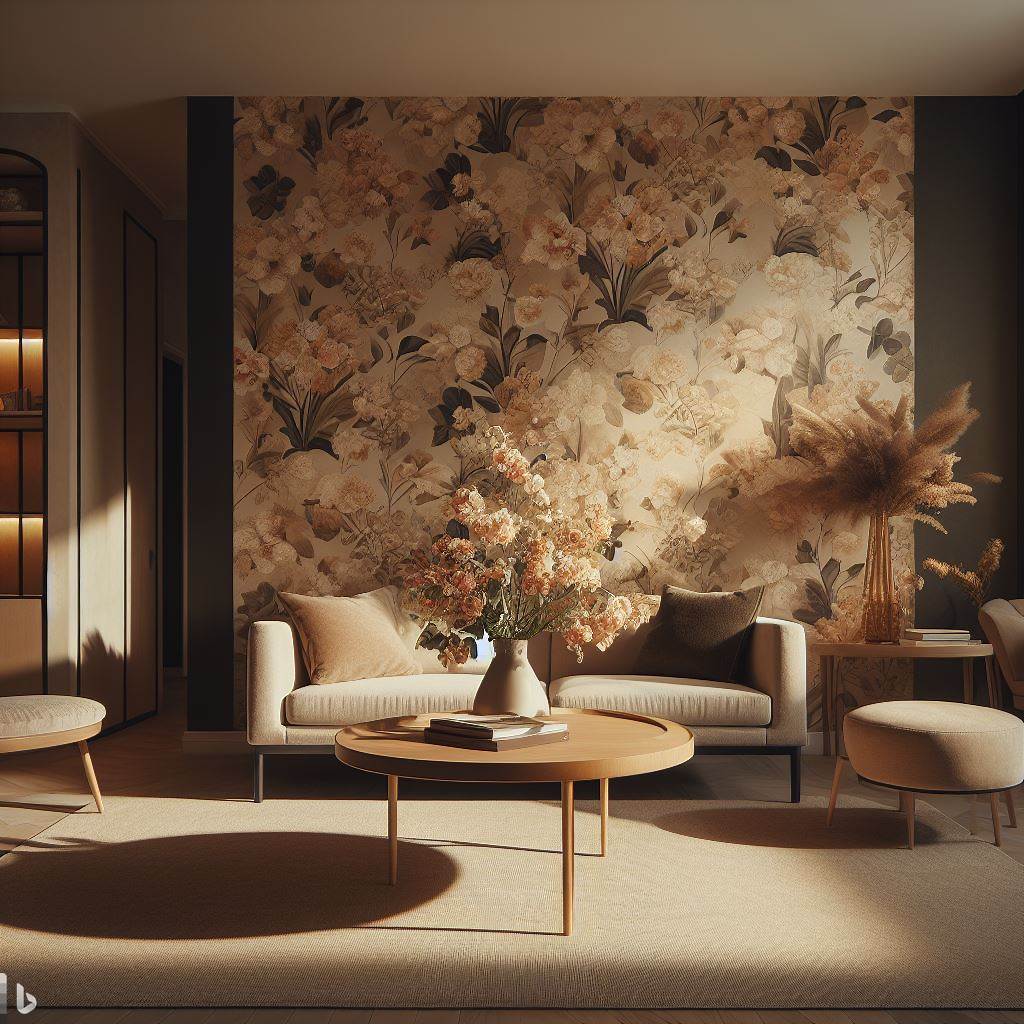Wallpaper has made a significant comeback in interior design, offering a versatile and stylish way to enhance the aesthetics of your home. Whether you’re looking to add a splash of color, a touch of elegance, or a bold statement, wallpaper can be an excellent choice. However, it’s not always the best option for every space or situation. In this blog, we’ll explore the pros and cons of using wallpaper in your home and provide tips for achieving the best outcome when applying it.
Why Wallpaper Might Be a Great Choice
- Versatility in Design
Wallpaper offers an extensive range of patterns, textures, and colors that paint simply can’t match. From intricate floral designs to sleek modern geometrics, there’s a wallpaper to suit every style and taste. - Adds Depth and Texture
Unlike paint, wallpaper can add physical texture to your walls, creating a more dynamic and visually interesting space. Textured wallpapers, such as grasscloth or embossed patterns, can add a tactile dimension to a room. - Covers Imperfections
Wallpaper can effectively cover minor wall imperfections, such as cracks or uneven surfaces, that paint might highlight. This makes it a practical choice for older homes with walls that are less than perfect. - Long-Lasting
High-quality wallpaper can be more durable than paint, especially in high-traffic areas. It resists scuffs and marks, making it a great choice for hallways, living rooms, and children’s bedrooms. - Unique Focal Point
Wallpaper can create a stunning feature wall that draws attention and adds character to a room. A bold, patterned wallpaper can serve as a focal point, enhancing the overall design of the space.
When Wallpaper Might Not Be the Best Choice
- Cost
Wallpaper can be more expensive than paint, both in terms of materials and installation. High-end wallpapers, in particular, can be a significant investment, which might not be suitable for every budget. - Difficulty in Application
Applying wallpaper requires precision and skill. Incorrect installation can result in bubbles, misaligned patterns, and peeling edges. While DIY application is possible, hiring a professional can ensure a flawless finish. - Removal Challenges
Removing wallpaper can be a time-consuming and labor-intensive process, especially if it’s been applied with a strong adhesive. This can be a major drawback if you like to frequently change your decor. - Limited Moisture Resistance
In areas with high humidity, such as bathrooms and kitchens, wallpaper might not hold up as well as paint. Moisture can cause wallpaper to peel or mold, making it less suitable for these environments. - Trend Sensitivity
Some wallpaper designs can quickly go out of style. While a trendy pattern might look great now, it might not age well, leading to a decor that feels dated sooner than you’d like.
Important Tips for Applying Wallpaper for the Best Outcome
- Prepare the Walls
Proper wall preparation is crucial for a successful wallpaper application. Ensure the walls are clean, smooth, and free of any loose paint or debris. Fill in any holes or cracks and sand down rough areas. - Measure and Plan
Measure your walls carefully and plan your layout to ensure patterns align correctly. Calculate the amount of wallpaper needed, accounting for pattern repeats and waste. - Choose the Right Adhesive
Different wallpapers require different adhesives. Follow the manufacturer’s recommendations for the best results. Use a high-quality adhesive to prevent peeling and bubbling. - Apply with Care
Take your time during application to ensure each strip is applied straight and smooth. Use a wallpaper smoother to eliminate air bubbles and ensure good adhesion. Trim excess wallpaper at the edges for a clean finish. - Consider Professional Installation
If you’re not confident in your DIY skills, consider hiring a professional. A skilled installer can ensure a flawless finish, saving you time and potential frustration.
Conclusion
Wallpaper can be a fantastic way to personalize and elevate the design of your home. Its versatility, ability to cover imperfections, and potential for creating unique focal points make it an appealing choice. However, the cost, difficulty in application, and potential removal challenges are important factors to consider. By carefully weighing the pros and cons and following best practices for application, you can achieve a beautiful and lasting result that enhances your living space.

